Made in Italy and with an unusual aesthetic, the Mya speakers from Nime Audio certainly look the high-end part, but what do they sound like. Stuart Smith cocks an ear to these €12500 beauties.
DESIGN AND AESTHETICS, FIT AND FINISH
Let’s jump straight in and discuss the elephant in the room with regards the Nime Mya loudspeakers – they look like no other speaker I’ve encountered before. Nico Memoli is the person behind the Nime (NIco MEmoli) brand and during the course of this review I got in touch with him to ask him about his philosophy of design given the very different aesthetics of his loudspeakers and here’s what he had to say: “I am a lover of beauty and design of all kinds; clothes, cars, shoes, furniture etc and I thought that even within the sometimes esoteric world of High End, specifically the loudspeakers needed a refresh with the design. I believe this to be the case because the modern furnishing market is having a great aesthetic evolution, and I believe that the “old” box-shaped lines are no longer current in luxury or contemporary furnishings. In 2010 I designed the first Elite One model loudspeaker and I proposed it to the market in 2012. In my opinion, the Elite One managed to combine both design and functionality, creating a high-performance diffuser which, like a piece of furniture, was easy to fit into modern furnished homes, enhancing the location wherever it is placed. All my present and future models take this rule into account.” And so there you have it. With regards the design and aesthetics, it is bound to cause differences of opinion and personally I believe this to be a good thing – too many times designers follow the same tried and tested formula without wanting, or daring, to stick their heads up above the parapet and do something a little different, individual and from their heart. The Mya could never be accused of being a shrinking violet and whilst it is certainly arresting in its design concept it works. I genuinely believe that within pretty much any space the Mya would be a talking point – a work of functional art if you like. I can imagine these speakers looking fantastic in a sparse loft, in a home decorated with high-end modern furniture and even in a space that is occupied by older furnishings where the juxtaposition of the old and the ultra-modern would work brilliantly. OK, I’m no Laurence Llewelyn Bowen (for those that don’t know he’s a “British self-styled “homestyle consultant” and television personality best known for his appearances on the BBC”) but personally, I love the way these speakers look and the way they integrated visually into our listening room – though they proved a bit of a ‘mare to photograph. Many people have seen the Myas and the first comment from many is “Alien” and I get that and they do have a touch of the H. R. Gigers about them, particularly in the shape of the actual “box” and its back-sweeping curves. Aesthetically, I loved these, but then a beautiful design is never going to cut the mustard if the sonics aren’t on a par – the Myas are making a statement (and it’s a bold statement) so they had better live up to them on the sound front – but more on that later.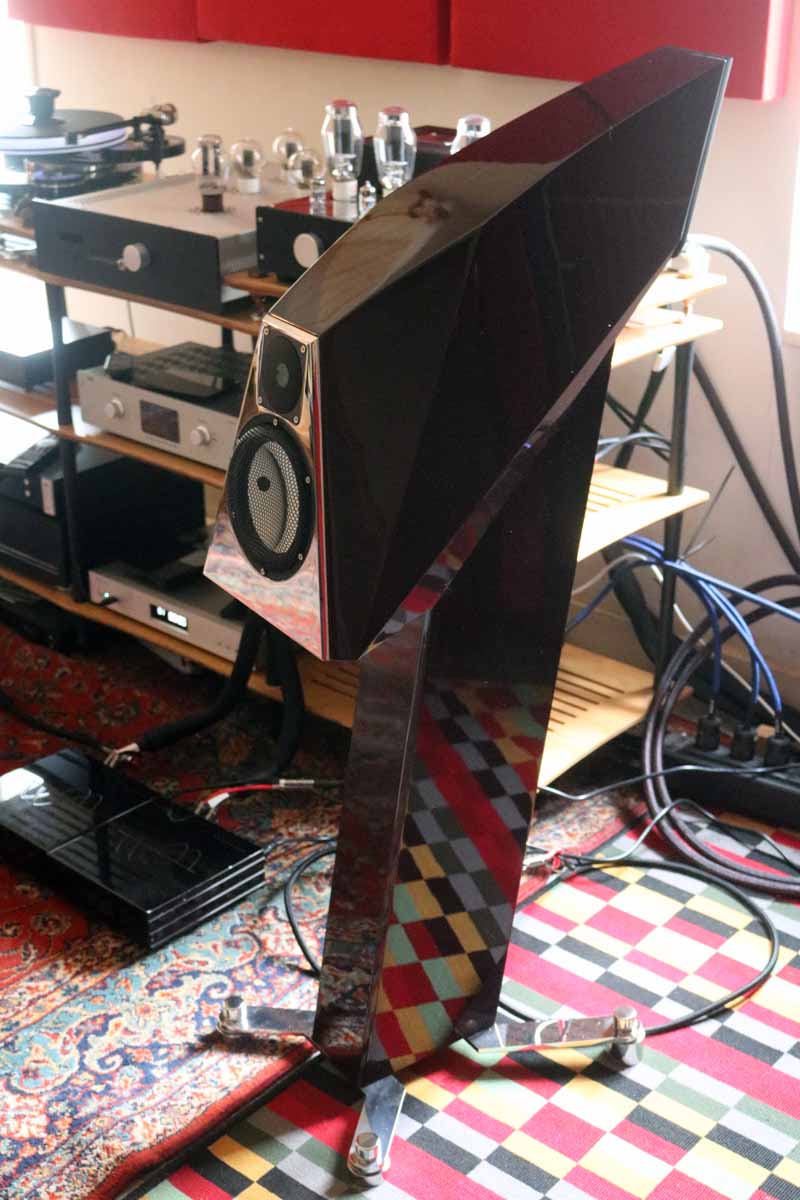
The speakers are essentially a standmount, but the stand is an integral part of the speaker and so for all intents and purposes you can see them as a floorstander, or a standmounter – you get my drift I’m sure. The design of the driver enclosure is such that it is multi-faceted in order to avoid and control internal resonances. The Mya is a two-way bass reflex design with the port being at the rear and through which you are able to see some of the internal bracing. Driver compliment is a 25mm ceramic dome tweeter and a 170mm ceramic mid cone, both coming from Accuton. Now here is an interesting point and I say it whenever I hear a speaker that uses Accuton drivers – I have never heard a bad sounding speaker that uses them and were I suddenly to take the urge to go into loudspeaker manufacture, it would be their drivers I would look to explore first of all. The Myas have a claimed frequency response of 40Hz to 20 KHz, have an impedance of 8 Ohms and a sensitivity of 88dB. Nime suggests an amp of 15 to 120 Watts to drive them and for the purposes of this review we utilised our Merrill Thor Class D amps. Dimensions for the speakers on their stands is 1080 x 280 x 700mm (HWD) and they weigh in at 30Kg each. The speakers arrived in their own purpose made crates and were very well packaged, ensuring they arrived safe, sound and unharmed during transit from Italy. The stands on the review models were gloss black (or so I thought up until very close inspection) with Chromed legs and the actual speakers were the same gloss “black” with a highly polished steel (?) front plate – loads of finishes are available. In actual fact, the “black” finish is a very, very dark red colour. Round the back and integrated into the stand are a single pair of good quality binding posts on a metal plaque which has details of the speakers and Nico’s signature. Finish is frankly stunning and the attention to detail is second to none.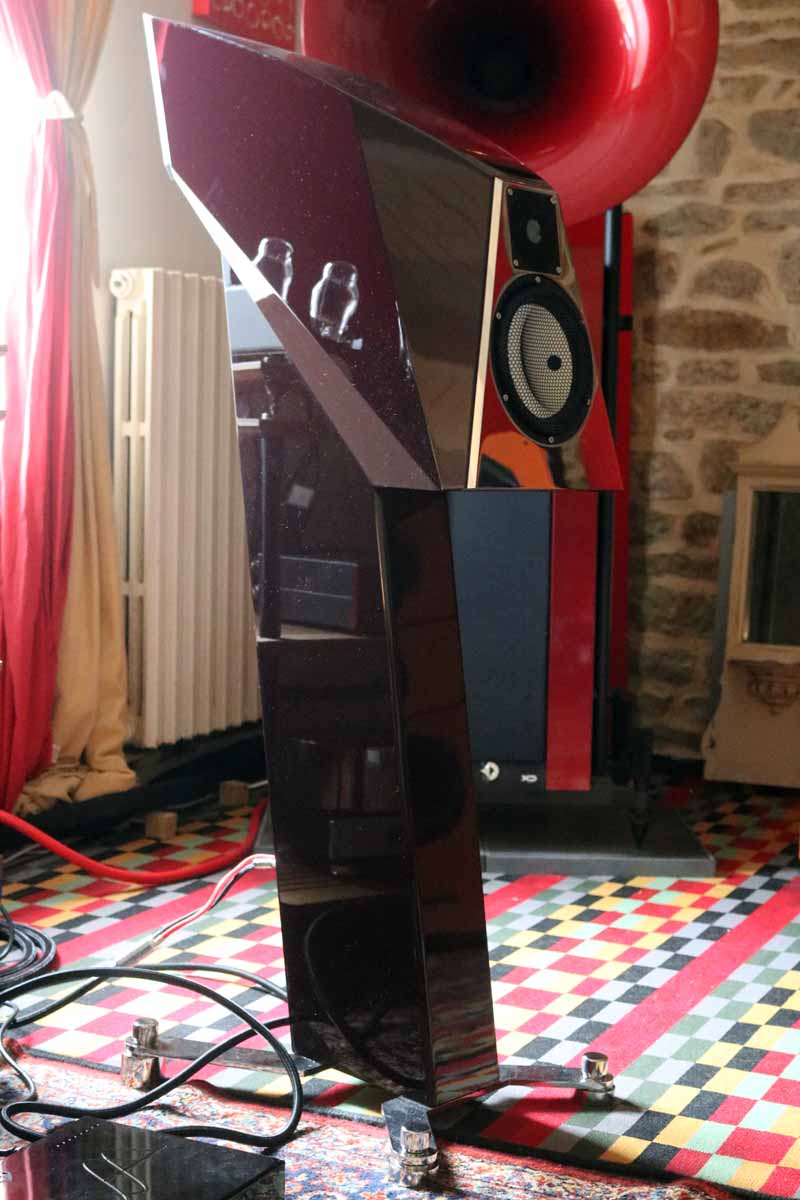
Positioning was a doddle and we had them firing across the main, and larger, of our listening spaces. They were about 1.5m from the back wall and at least 3m from side walls on both sides. I had them set about 2.5m apart with the main listening spot making up the triangle. As mentioned the amps were out Merrill Thors which we know very well, along with the Music First Baby Reference preamplifier and Lampizator Big 7 DAC which was being fed zeros and ones directly from our Melco unit. Cables were a mix of Tellurium Q, Atlas and 02A with power conditioning being from a balanced mains unit.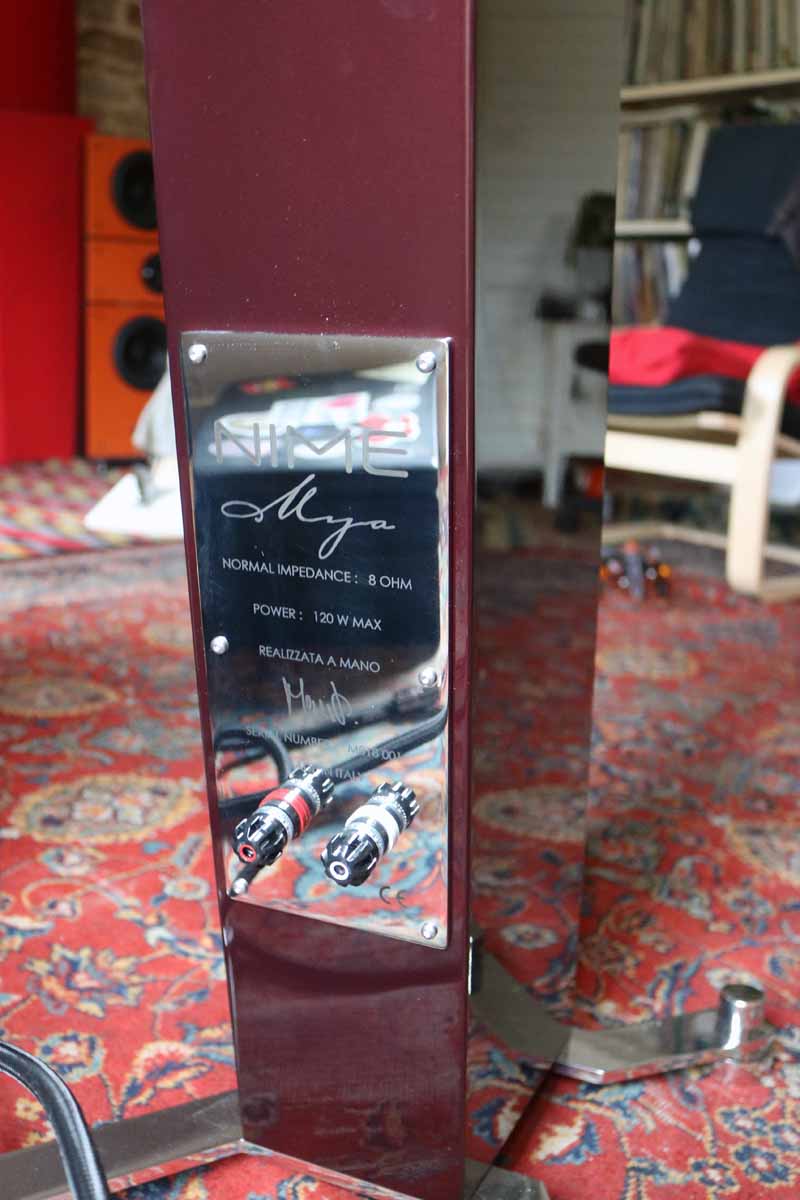
SOUND
After the speakers arrived they were left to play to themselves for a good while by way of run in and before any serious listening took place, thereafter they had all kinds thrown at them from Hip-Hop to Neil Young and most ports between. Too often I see reviews of speakers and other kit that seem to want to pander to the products strengths rather than testing them for their weaknesses and so without further ado I searched for Hardfloor (acid techno pioneers who are still making some immense music) and their classic Acperience 1, but this time the stonking Kiyoshi Sugo remix, which to be fair I don’t know too well. Volume was turned up and I settled in. I posted pics during the listening sessions on our Facebook pages and one person made the comment that music made for a club environment can sound cold and sterile on high-end systems and whilst I get this my thoughts are that a good loudspeaker should be able to convey all music equally. We listen to a wide range of music and so to me a speaker is neither use nor ornament if it can’t handle everything we play through them. Anyway, you’ll be pleased to hear the Myas coped very well with this track – it’s got that sidechained compressor pump that seems to upset folk in the audiophile community, but without it the tune wouldn’t have the same sonic impact and the Myas pump along with it brilliantly. There’s still that analogue 303 bassline bubbling away in the background and the Myas bring to the fore a metallic percussion “ting” on the left side of the mix which to me shows the tweeter to be very detailed. Bass-wise I was a happy bunny and whilst we’re not getting the same depth that you could possibly expect in a club, they go low enough and with enough detail to satisfy. Switching to the original version of this tune (it’s a lot more stripped down and I know it a LOT better having played it out at raves, parties and clubs hundreds of times) the bass kick of the analogue drum machine is thick and analogue sounding whilst the main hats are crisp and precise and when a much quieter set of hats come into the mix they are clearly heard. The cowbell on the 808 is realistic and convincingly like the real thing on the classic drum machine and the acid box (Roland TB303) has the right feel, timbre and bite. This is a surprisingly complex track with a few 303s doing their thing and it can become muddled on some systems, particularly during the breakdown to just 303s, but the Myas never become muddied or befuddled and when the snare roll moves us on to the next section of the song it’s a bit of a hands in the air like you just don’t care moment – a good sign. The standout here is the portrayal of the rasp and growl of the various 303’s the duo use, with each different line being easily differentiated from the others. Turn the volume too high and things can get a little broken at the top end, but we are speaking about volumes few would bother to listen to unless trying to push the speakers to their limits. All in all, a good start to proceedings with the Nime speakers feeling powerful and yet detailed.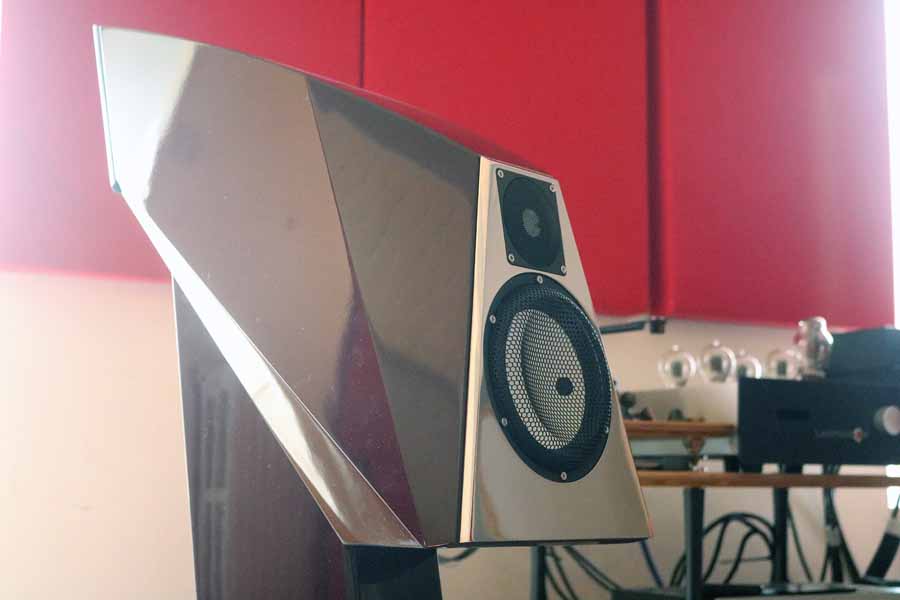
Hotel California is up next and it’s another tune I know very well and the first thing that strikes me at the start of the tune is the little percussion shakes and taps on the cymbals come from well right and left of the speakers’ physical position, which is a nice touch. There is also what sounds to me like a reverbed cymbal that passes from right to left and back again, and whilst this is a very subtle effect it is easily identifiable here – again very nice detail. Speed on cymbals and snare hits is fantastic and this is a characteristic of the Accuton drivers as I’ve heard it before with speakers using their products. All in all the song is presented coherently and without emphasis on any particular frequency and is highly detailed in its presentation through the Myas. The guitar solo and the way in which notes stop and start also show these speakers to be agile and speedy. I like this.
You may not know the music of Simon Lomax (you should) but he creates wonderful soundscapes that are, to use a cliché, cinematic in their scale. Listening to his All That Is Gone tune gives you an idea of how wide a soundstage these speakers throw, and yet it doesn’t feel to be overexaggerated. This song builds textures upon textures and goes from very quiet to being very loud, but not once do these speakers seem phased and respond quickly and present the whole so you can “see” the layers of sound and almost feel the waves of the pads wash over you. It all feels very organic and natural again with control and speed in the way sounds disappear and come to the fore.
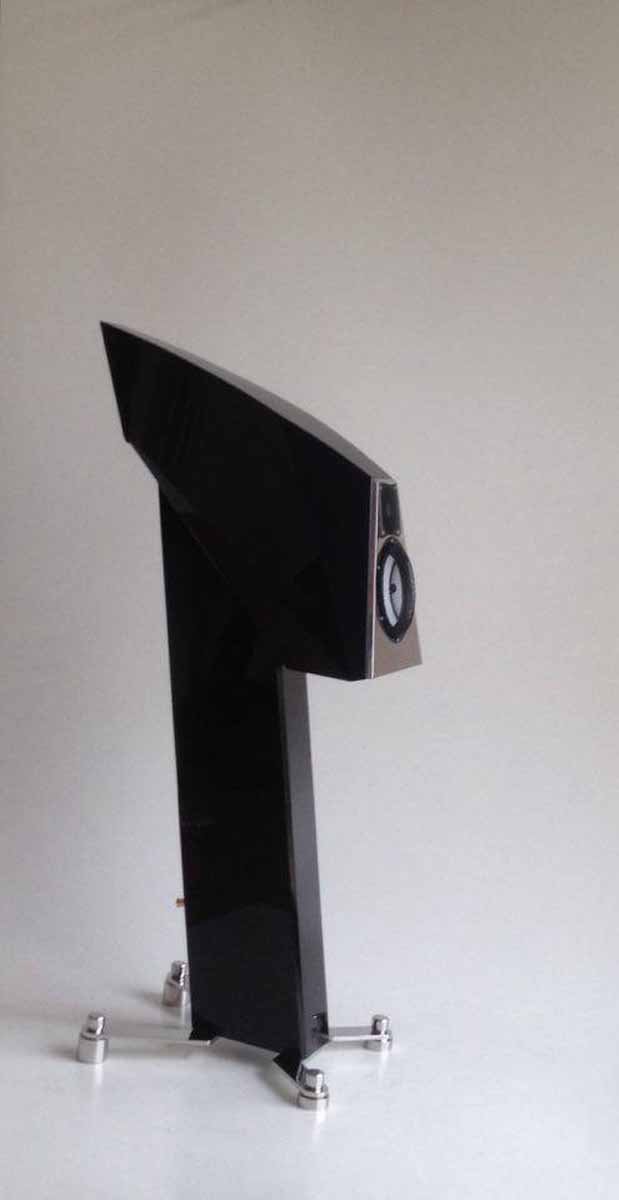
Let’s change the tone a bit shall we and pop on a bit of Roy Harper in the form of his fantastic Flat, Baroque and Berserk. His voice is delicate, to the point of being on the edge of breaking at times and this is conveyed beautifully by the Myas, with Hangman sounding fabulous. Harper’s guitar playing is more complex than it initially seems and again detail is presented really nicely through the Myas. The album ends with Hell’s Angles with guitar panned for the main to the left channel and organ to the right with drums panned between the two and Harper’s voice being mainly central but with hard panning left and right at times and again this is represented very well with the Myas – I’ve said this about a few pairs of speakers we have had in for review recently but there is a very “monitor” kind of feel to the Nime speakers which I enjoy. Now, this track is a complete departure from the other tunes on the album being more rock orientated, but the Myas are unphased and what stands out for me is the rock-solid bass guitar that sits bang in the middle of the mix throughout whilst the rest of the mix goes a bit mental. These speakers feel accurate and solid in their positioning of instruments in the mix however hectic things get and I like that a lot! There’s a bit at the end of Hell’s Angels where the recording is just of Harper in the studio talking and giggling with loads of reverb – “jazz cigarettes” may have been involved I feel – and you do get a real feeling of being on the other side of the glass looking in on Roy in a bit of a state in the live room. By the way, if you don’t have this record or know Roy Harper then go and buy it, it’s quintessentially English and superb throughout!
A tune that really does it for me emotionally is Lady Bird by Natalie Merchant and with the Mya’s I’m once again connected to the tune. Her voice is presented beautifully with all the feeling and subtle nuances being there. Strings are separate and yet part of the whole and there is that layering of the sounds whilst still being a complete track. Detail (some will call it micro-detail but that phrase always sounds a bit contrived to me) on the snare is great with the actual snare (the metal spring doodads) being easily identifiable and slightly loose. Again, it’s in the detail.
I don’t play much classical at all but I do have a soft spot for a record by Norbert Gembaczka, Russian National Orchestra and Mikhail Pletnev on Pentatone (Manfred Op. 58 by Tchaikovsky) and I listen to it once in a while and do enjoy it. At lower volumes the Myas still manage to convey that you are listening to a full orchestra and I feel sat about halfway back in the stalls. Positioning of the instruments and players is presented in a three-dimensional arc around the back of the speakers which adds depth and realism to the recording. Despite me playing this at lower levels I’m still able to pick out individual instruments, where they are in the orchestra, both left and right and forward and back and there is still a feeling of the dynamics of the orchestra. I particularly enjoyed the speed of the decay on the timpani.
CONCLUSION
OK, €12500 isn’t a drop in the ocean, but neither is it a huge amount of money when put in the context of high-end audio and this is what we have here. Fit and finish are absolutely superb and in keeping with the high-end, and what you are buying into from an aesthetic point of view is a piece of aural furniture. Look, we are not in the league of buying expensive Italian furniture but I did a quick search and found a sofa by Mario Bellini for £35K…used, which puts things into perspective somewhat.
Sonically what you get is a great performing speaker that has fantastic speed to decays, great insight and detail into both recording and recording space and a sound that expands well beyond where the speakers are placed…but still not artificial sounding. At lower volumes they perform beautifully with no loss of detail and whilst it is a detailed sound it is not at all fatiguing. To use a car analogy, I suppose I’d liken these speakers to a Maserati Gran Turismo – elegant, beautifully finished, comfortable and yet furiously fast.
AT A GLANCE
Build Quality: Outstanding fit and finish with superb Italian styling. The speakers are not and do not feel mass-produced – they feel individual and artisanal (in the best sense of that word).
Sound Quality: Detail, speed and scale are these speakers’ hallmarks.
Value For Money: This is going to divide opinion, but for what you are getting here, I think €12500 is a very reasonable asking price.
Pros: Stunning looks, fit and finish. Detailed sound that is fast and controlled.
Cons: At very loud volumes there is top-end breakup. Looks may well divide opinion.
Price: €12500
Stuart Smith


























































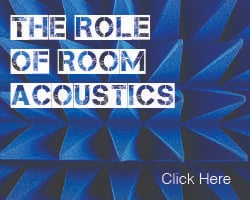

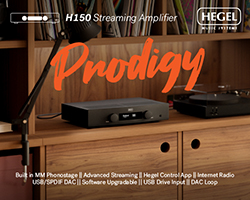
















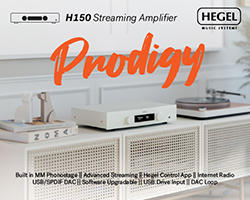







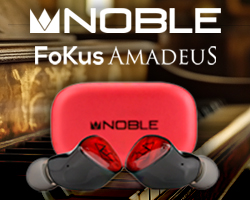
































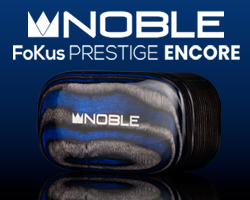

































































































You must be logged in to leave a reply.